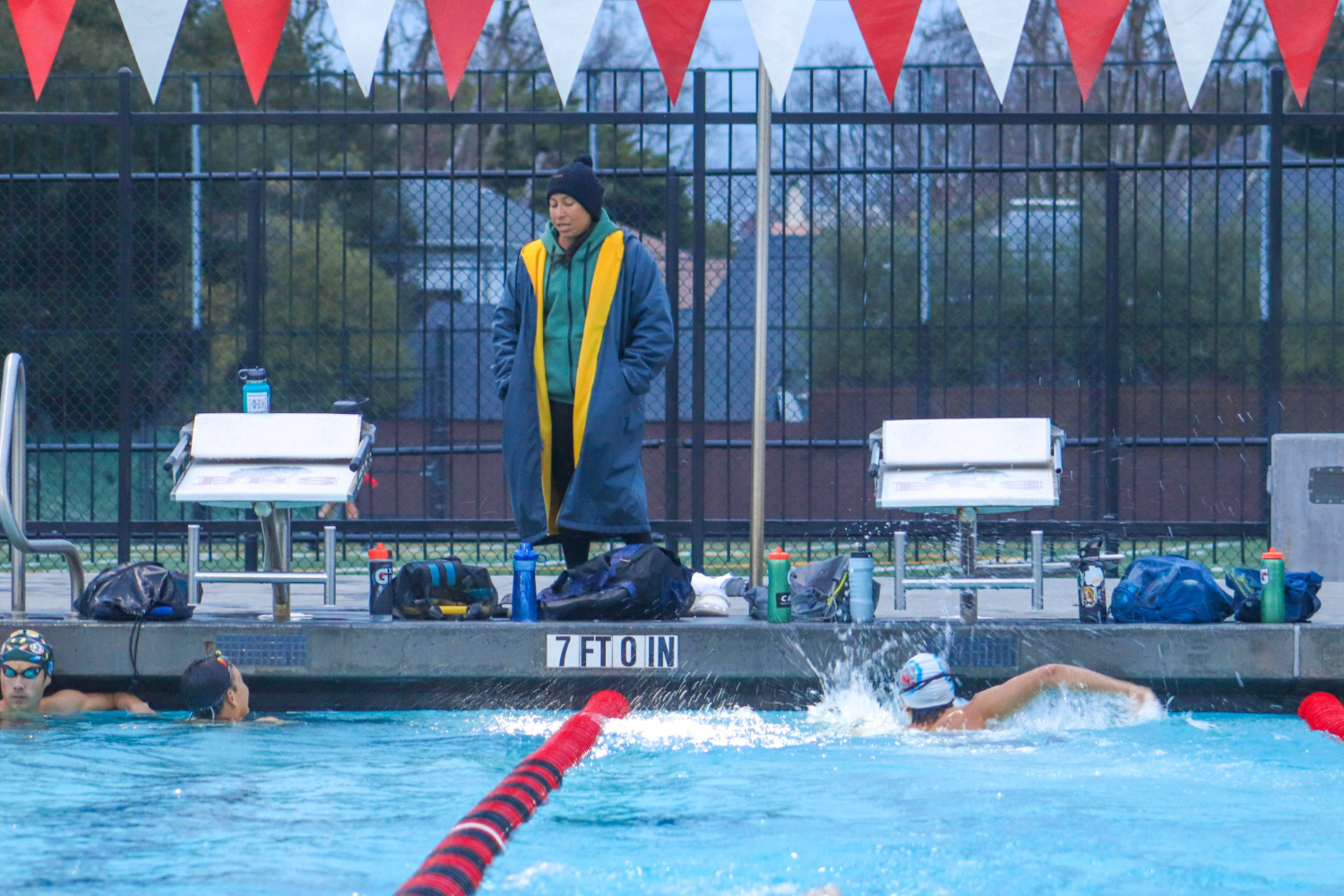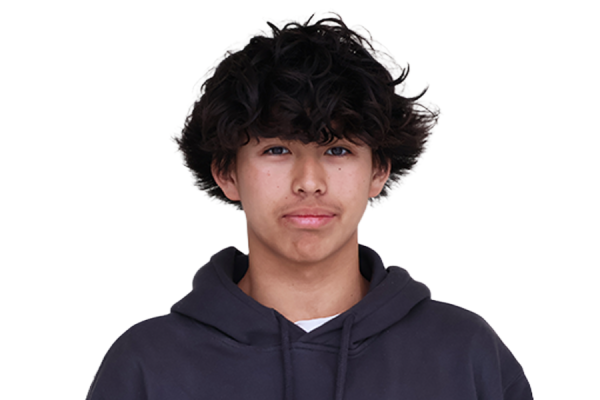Thousands of hours spent in the pool and millions of meters swam. Beyond the water, they are drenched in sweat from the gym and doing dryland exercises. This is what a resume of an elite-level swimmer looks like. Despite all of this time and hard work, there’s still only a tiny chance of competing at the Olympic Games.
Swimmers who train their entire lives for a shot at the Olympic Games put in countless hours of work. Their dedication and discipline is unmatched. They experience highs and lows, but only those who really want it persevere through the lows and push themselves more.
Golda Marcus is one of the few individuals who managed to reach the top of the pyramid. However, this feat wasn’t achieved effortlessly.
It all started for Marcus at the age of 18 months when her grandmother decided to throw her in the water to see what would happen. To everyone’s surprise, Marcus started kicking by herself. This would be the beginning of a life-changing journey.
As Marcus started to become more involved in swimming, the Olympics became one of her dreams when she was 5 years old. When she was watching the 1988 Seoul Olympics on television with her grandfather, Olympic swimmer Janet Evans caught her eye. Marcus has always been a small person compared to others. At the time, Evans was only 17 years old, and she was small as well. She stood at 5 feet and 3 inches and weighed 99 pounds. Despite this, she won three gold medals. Ever since Marcus saw Evans’ performance, she has been her inspiration.
“I was watching that race with my grandfather, and I told my grandfather that that’s what I want to do. I want to represent my country in the Olympics and swim just like Evans. At 5 years old, my sole hyperfocus was the Olympics,” Marcus said.
As Marcus grew older and got faster, she joined multiple different swim teams throughout her life. These include Brandon Sports & Aquatic Center, Blue Wave Swimming, Broward Aquatics, and Florida Gold Coast Swimming. After high school, Marcus became an NCAA (National Collegiate Athletics Association) Division I athlete and swam at Florida State University.
Over the course of Marcus’ career, she achieved many significant milestones. In the 2001 Central American Games, CCCAN (Central American & Caribbean Swimming Confederation) Championships, 2002 Central American and Caribbean Games, 2006 Central American and Caribbean Games, and the 2007 CCCANs, she won a combined total of 23 medals. These included 12 gold, 3 silver, and 8 bronze. Furthermore, she competed in the Athens 2004 Summer Olympics and Beijing 2008 Summer Olympics. She swam the 400-meter freestyle and 800-meter freestyle for her home country, El Salvador.
However, in order to be successful and win medals, swimmers have to be willing to work hard in practice. There are many different exercises that swimmers work on each week including breath control, drills, sprints, long-distance, technique, and much more. Practices are strategically structured for the best results for athletes and usually follow a similar pattern each week.
In an experiment that was conducted to record the structure and volume in the four-year training cycle of an elite Olympic athlete, it was found that “effective training management is possible through the precise design of tasks of an appropriate volume and intensity. In the differentiation of loads, it is very important to take into account individual intensity ranges. Particular attention should be paid to the boundary between aerobic and anaerobic zones.”
Similarly, Marcus was a hard worker in practice. Even on the days when Marcus didn’t want to go, she went because she knew it would make her a better swimmer.
“I may not want to go, but missing a practice isn’t an option. I need to make myself better. I need to do this because I want to be better,” Marcus said.
Training isn’t the only aspect of swimming although it’s important. Not only are the best swimmers in the world physically strong, but they also have to be very strong mentally. In their paths to get there, many athletes face mental problems.
A majority of Olympic swimmers deal with mental health issues. Based on an interview with Michael Phelps, arguably one of the greatest swimmers of all time, with NBC News, even the best swimmers struggle. Marcus is no exception from other swimmers. Before the Olympics, Marcus struggled with some mental problems, her greatest setback ever being herself. With pressure from the media, Marcus felt like she had to be perfect, but this image of perfection messed with her mentally. Fortunately, she was able to overcome this with the help of her coach.
“It was the one coach that got me to Athens and Beijing that took the time to get to know me as not just an athlete, but as a human being,” Marcus said.
Thomas Dowley is a former NCAA Division I swimmer at the University of California, Berkeley. He is currently a coach at Burlingame Aquatic Club. Throughout Dowley’s career and experiences, he believes that a swimmer’s own mind and thoughts are the greatest challenges to overcome.
“I need to stop protecting myself because if I don’t, that’s how my body’s going to change. That’s how I’m going to get stronger. That’s how I’m going to get stronger,” Dowley said.
Similarly, according to a study based on British swimmers’ attempts to qualify for the Olympic games, participants’ results all shared a common theme of self-doubt. This presence of self-doubt was found in both the swimmers and their support network.
Aside from training and mental struggles, there is also the competitive component of swimming. From slowest to fastest, these include Age Group Championships, Zone Championships, Sectionals, Futures, Junior Nationals, Nationals, and eventually the Olympics.
In the Beijing 2008 Summer Olympics, Marcus placed 32nd and 39th in her two events. Despite being in the top percent of swimmers around the world, Marcus didn’t even make it out of the preliminary stage.
Though the Olympics are very competitive, so are other levels of swimming. According to the NCAA, out of over 116,000 high school swimmers, only 3.3% make it to the Division I level. This shows how hard it is to reach the elite level of swimming. After college, it only becomes more challenging to get to the next level and many dreams of competing at the Olympics are crushed.
Senior Zerach Chan is trained by Marcus at Burlingame Aquatic Club. He’s one of the top swimmers on the team and is thinking about swimming in college.
“The colleges only want the fastest swimmers. It’s very hard to make it to Division I,” Chan said.
Additionally, Dowley talks about the competitiveness of swimming for the top colleges.
“Every top 25 college, when they start recruiting, look at the same 25 to 50 athletes. These are usually the top two or three in each event,” Dowley said.
In the end, many swimmers who dream of competing at the Olympic level never accomplish their goal. Only a small number of swimmers qualify for the Olympics every four years.
In 2019, the FINA General Survey recorded almost 35 million aquatic athletes around the world. Within this number, around 31 million of the athletes were registered swimmers. At the Tokyo 2020 Olympic Games, 1000 swimmers competed. This means that only 0.0032% of swimmers worldwide made it to the Olympic Games. This number only gets smaller as more people start to swim and current swimmers get faster.
In spite of everything, Marcus’ journey highlights the reality of what it takes to be an Olympic swimmer. No matter what level swimmers are at, every step is a physical and mental challenge. Only a small number of swimmers overcome these challenges, truly emphasizing how astonishing it is to reach the highest level.
Marcus’ best piece of advice is to always be excited and ready for what’s to come in the future, even when times are tough.
“Alright, I swam this. Now how do I get to the next step? What’s the next step?” Marcus said.



